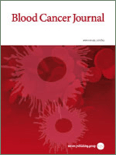
Blood Cancer Journal
Scope & Guideline
Championing accessible research for global impact.
Introduction
Aims and Scopes
- Hematological Malignancies Focus:
The journal primarily addresses various types of blood cancers, including multiple myeloma, acute myeloid leukemia (AML), chronic lymphocytic leukemia (CLL), and lymphomas. This focus allows for a comprehensive understanding of disease mechanisms and treatment outcomes. - Clinical Research and Trials:
A significant emphasis is placed on clinical trials, providing insights into new therapies, treatment regimens, and patient outcomes. The journal publishes studies that evaluate novel drug combinations and treatment strategies, contributing to evidence-based practice. - Genomic and Molecular Insights:
The journal highlights research that delves into the genomic and molecular landscape of hematological malignancies. This includes studies on mutations, gene expression profiles, and the impact of genomic alterations on prognosis and treatment response. - Therapeutic Innovations:
Research on emerging therapies, including CAR-T cell therapy, bispecific antibodies, and targeted therapies, is a core area. The journal aims to disseminate findings that may lead to improved treatment protocols and patient outcomes. - Patient-Centric Studies:
The journal also focuses on patient-reported outcomes and the quality of life of individuals with blood cancers, addressing the psychosocial aspects of treatment and survivorship.
Trending and Emerging
- Precision Medicine and Genomics:
There is a surge in studies focusing on precision medicine, highlighting the importance of genetic profiling and molecular characterization of tumors. This trend reflects the move towards individualized treatment strategies tailored to the genetic makeup of each patient’s cancer. - Immunotherapy Advances:
Research on immunotherapy, including CAR-T cell therapy and bispecific antibodies, is increasingly prevalent. This reflects a broader shift in the treatment landscape, with a focus on harnessing the immune system to combat hematologic malignancies. - Real-World Evidence and Patient Outcomes:
Emerging studies are emphasizing real-world evidence and patient-reported outcomes, showcasing the importance of understanding treatment effectiveness and quality of life in diverse patient populations. - Multi-Omics Approaches:
The application of multi-omics strategies (genomics, transcriptomics, proteomics) to better understand disease mechanisms and treatment responses is on the rise, indicating a trend towards more comprehensive research methodologies. - Health Disparities and Access to Care:
An increasing number of studies are addressing health disparities and access to care in hematological malignancies, highlighting the need for equitable treatment options and outcomes across different demographics.
Declining or Waning
- Traditional Chemotherapy Studies:
There is a noticeable decrease in studies focusing exclusively on traditional chemotherapy regimens. As newer targeted therapies and immunotherapies gain traction, research on older treatment methods is becoming less common. - Efficacy of Standardized Treatment Protocols:
Research on standardized treatment protocols, which previously dominated discussions, is becoming less frequent. The focus is shifting towards personalized medicine approaches that consider individual genetic profiles and responses. - Basic Biological Mechanisms:
While foundational studies on the biology of hematological malignancies remain important, there seems to be a waning interest in purely basic science articles that do not directly translate into clinical applications or therapeutic advancements.
Similar Journals
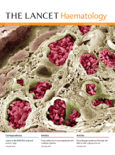
Lancet Haematology
Shaping the landscape of hematology with impactful findings.Lancet Haematology, published by Elsevier Science Ltd in the United Kingdom, is a premier peer-reviewed journal dedicated to advancing the field of hematology. With an impressive impact factor and listed in the Q1 category in hematology for 2023, this journal ranks #4 out of 137 in the Scopus database, boasting a 97th percentile indicating its influential role in disseminating high-quality research. Since its establishment in 2014, Lancet Haematology has provided a vital platform for researchers and clinicians to share groundbreaking studies, innovative treatment approaches, and novel therapeutic discoveries relevant to various hematological disorders. The journal does not operate under an open access model, but it offers multiple access options to facilitate engagement with its content. By bridging clinical practice and cutting-edge research, Lancet Haematology aims to foster the advancement of knowledge and improve patient outcomes in hematology, making it an essential read for professionals, researchers, and students alike.

Blood and Lymphatic Cancer-Targets and Therapy
Empowering Research in Blood and Lymphatic CancerBlood and Lymphatic Cancer-Targets and Therapy, published by DOVE MEDICAL PRESS LTD, is a vital open-access journal that has been disseminating crucial research and findings in the field of hematology and oncology since 2011. With its ISSN 1179-9889, this journal focuses on the latest therapeutic targets and innovative treatment strategies for blood and lymphatic cancers, contributing significantly to the advancement of knowledge and practice in this specialized area. Designed for researchers, healthcare professionals, and students alike, Blood and Lymphatic Cancer-Targets and Therapy aims to foster a deeper understanding of cancer biology and promote collaborative efforts leading to novel therapeutic interventions. The open-access model ensures that research findings are readily accessible to a global audience, underscoring the journal's commitment to enhancing patient care and fostering educational growth in the cancer domain.
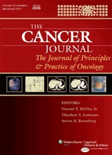
CANCER JOURNAL
Pioneering Insights for Tomorrow's Cancer Therapies.CANCER JOURNAL is a leading peer-reviewed publication dedicated to the dissemination of innovative research in the fields of cancer research and oncology. Published by Lippincott Williams & Wilkins, this journal serves as an essential resource for researchers, clinicians, and students seeking to advance their understanding of cancer mechanisms, treatment strategies, and patient care. With an ISSN of 1528-9117 and an E-ISSN of 1540-336X, it boasts a respectable 2023 Q2 category ranking in both Cancer Research and Oncology, reflecting its impactful contributions to the scientific community. Although it currently does not offer open access, the journal's rigorous peer-review process ensures the publication of high-quality, relevant studies that stimulate further investigation and collaboration among professionals. Since its inception, the journal has evolved through several converged years, maintaining a steadfast commitment to addressing the complexities of cancer biology and treatment. At its core, CANCER JOURNAL aims to foster advancements in oncology, making it a vital platform for sharing pivotal findings that could transform cancer research and therapeutic practices.
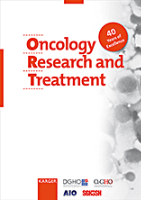
Oncology Research and Treatment
Uniting researchers to combat cancer effectively.Oncology Research and Treatment, published by KARGER, is a highly regarded academic journal dedicated to advancing the field of oncology through rigorous research and clinical insights. With a history spanning from 1978 to 1997 and continuing from 2013 to 2024, this journal provides a vital platform for researchers and professionals in cancer research, hematology, and related disciplines. Though currently listed in the Q3 tier of 2023 for Cancer Research, Hematology, and Oncology, its growing readership and open access policy enhance its visibility and impact within the scientific community. Based in Switzerland, the journal features diverse access options, reflecting the global importance of oncology research. With a focus on innovative treatments and the latest methodologies, Oncology Research and Treatment plays a crucial role in fostering collaboration and dialogue among researchers, professionals, and students alike, helping to shape the future of cancer care and management.

Hematologie
Unveiling New Insights in Hematological ResearchHematologie is a highly regarded journal in the field of hematology, published by JOHN LIBBEY EUROTEXT LTD. With an ISSN of 1264-7527 and an E-ISSN of 1950-6368, this journal has established itself as a vital resource for researchers, clinicians, and students dedicated to advancing the understanding of blood disorders and treatments. Although the journal's coverage in Scopus was discontinued in 2018, it has continually provided invaluable insights and research findings. The journal aims to foster knowledge sharing and discussion in hematology, exploring innovative methodologies and emerging trends in the field. With a commitment to quality research, Hematologie remains an essential platform for disseminating critical findings that can drive clinical practice and influence future studies in hematological sciences.

HemaSphere
Exploring the frontiers of hematology research.HemaSphere, published by WILEY, stands at the forefront of hematology research, offering a vital platform for the dissemination of cutting-edge findings in the field. Since its inception in 2017 and official transition to Open Access in 2018, the journal has positioned itself as a leading conduit for high-impact research, maintaining a prestigious Q1 quartile ranking in the Hematology category as of 2023. Addressed in the United States at 111 River St, Hoboken, NJ, HemaSphere aims to foster a global dialogue among researchers, clinicians, and students by providing unrestricted access to high-quality content that encompasses clinical and experimental advancements. With an array of engaging articles, reviews, and commentaries, HemaSphere contributes significantly to the advancement of hematology, ensuring that critical knowledge is readily accessible to enhance patient care and innovative research. To explore the latest developments and breakthroughs in this dynamic field, we invite scholars, professionals, and students to engage with HemaSphere and elevate their understanding of hematologic science.
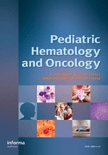
PEDIATRIC HEMATOLOGY AND ONCOLOGY
Fostering dialogue in the realm of child health and treatment.Pediatric Hematology and Oncology, published by Taylor & Francis Inc, serves as a vital platform dedicated to the fields of hematology, oncology, and pediatrics, providing a comprehensive avenue for the dissemination of scholarly research and clinical advancements. With an ISSN of 0888-0018 and an E-ISSN of 1521-0669, this journal has successfully converged its expertise over the years from 1984 to 2024. Ranked in the Q3 category for Hematology and Oncology, alongside a Q2 ranking in Pediatrics, Perinatology, and Child Health (2023), it engages a diverse readership comprising researchers, healthcare professionals, and students eager to explore groundbreaking studies in child health and treatment methodologies. While it currently does not offer Open Access options, the journal is widely cited and recognized, particularly in its specialized fields, fostering a rich environment for dialogue and innovation in the management of pediatric hematological and oncological disorders. The journal is based in the United Kingdom at 530 Walnut Street, Ste 850, Philadelphia, PA 19106, making it an essential resource for those pursuing excellence in pediatric medical research.
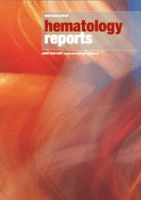
Hematology Reports
Fostering collaboration in hematological research.Hematology Reports is an esteemed academic journal in the field of hematology, dedicated to advancing the understanding of blood disorders and their treatment. Published by MDPI, a leading Swiss publisher known for its commitment to open access since 2009, this journal provides a valuable platform for researchers and healthcare professionals to disseminate innovative findings and foster collaboration within the academic community. The journal features an array of articles ranging from clinical studies to laboratory research, and is indexed in Scopus, where it currently holds a rank of 113 out of 137 in the Medicine - Hematology category, placing it in the 17th percentile. As an open-access journal, Hematology Reports ensures that critical research is accessible to a global audience, supporting the dissemination of knowledge that has the potential to improve patient outcomes. This journal is an essential resource for those engaged in the study and treatment of hematological conditions, encouraging dialogue and the exchange of ideas to enhance clinical practices.

Indian Journal of Hematology and Blood Transfusion
Empowering Healthcare Through Cutting-edge Hematology ResearchIndian Journal of Hematology and Blood Transfusion, published by SPRINGER INDIA, serves as a leading platform for disseminating original research, reviews, and case studies in the field of hematology. With an ISSN of 0971-4502 and E-ISSN 0974-0449, this journal has been instrumental in advancing knowledge from 2000 to 2024, providing insights into critical issues surrounding blood disorders and transfusion practices. Currently ranked in the Q3 category for Hematology for 2023, it reflects a commitment to high-quality scientific content amidst a competitive landscape where it ranks 97/137 in Scopus for Medicine - Hematology, placing it in the 29th percentile of its peers. The journal primarily addresses a diverse readership, including researchers, healthcare professionals, and students, aiming to foster innovation and collaboration within the field. Although it operates under a subscription model, access options for individual articles and institutional subscriptions ensure that valuable research is disseminated widely to enhance medical practice and education in hematology.
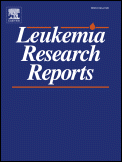
Leukemia Research Reports
Unlocking the future of leukemia treatment.Leukemia Research Reports, published by Elsevier Advanced Technology, is a prominent open-access journal dedicated to the latest advancements in the field of hematology and oncology. Since its launch in 2012, this journal has been a vital resource for researchers, healthcare professionals, and students aiming to disseminate and access high-quality research articles focused on various aspects of leukemia and related blood disorders. With an impact factor indicative of its significance in the field, Leukemia Research Reports currently holds a Q3 quartile ranking in both Hematology and Oncology, and is included in key databases such as Scopus. The journal not only embraces a commitment to open access, ensuring that research is freely available, but also actively promotes collaborations that strive to enhance our understanding and treatment of leukemia. Based in the United Kingdom, this journal continues to play a crucial role in fostering innovation and knowledge sharing within the medical community.